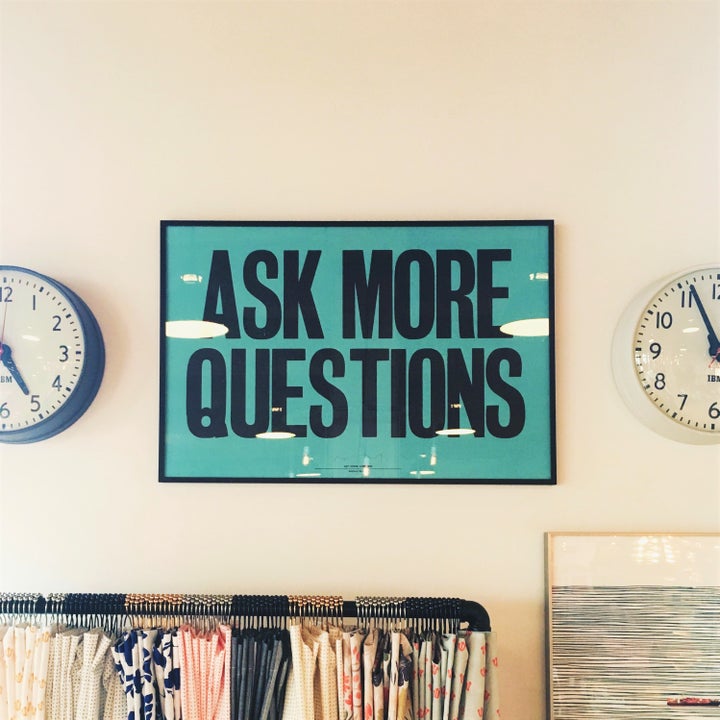Hi there! I have a question for you: What happens when two lawyers walk into a courthouse? Well . . .?
You get a dental student! And better than that, you get one who knows a thing or two about managing dental anxiety. Because – between you and me – one of those attorneys may have had just a touch of dental anxiety growing up.

So let’s start at the beginning: what is dental anxiety?
Well, as a 2019 DMD Candidate at Harvard School of Dental Medicine, I can say one thing for sure: it is a well-studied, very significant topic. Dental anxiety and phobia is, plain and simple, the fear of the dentist. It is the fear of the sights, the sounds, the smells . . . maybe even the street corner! It is a fear of the process of sitting in a chair and having one’s teeth examined and, in some, it is a sign of an underlying anxiety disorder. Dental anxiety may even be so severe you avoid getting necessary care and treatment simply to avoid that ‘dreaded office.’ In fact, dental avoidance from dental anxiety occurs in up to 15% of Americans.
The thing is, most of us don’t talk about our dental anxiety. We don’t go around bragging about this paramount fear, and we certainly never learn how to – nor do we ever want to - face it.
But hear me out: you are not alone! Dental anxiety is actually rather common. One 2015 study found the prevalence to be upwards of 60%. Broken down, that 60% consisted of 27% of the population with moderate anxiety, 19% with high anxiety, and 12% with extreme anxiety.
And that’s good news, because we are in this together! You, your neighbors, your dentist. We are all working together to bring those astronomical numbers down and to get dental anxiety under control. Starting with YOU!
Now, as a dental student, I tend to be in absolute head-over-heels love with the dental office. You name it, I adore it! But I do have family with dental anxiety, and I have friends with this fear, and I have learned a thing or two from them and from patients about what works best for managing dental anxiety. And get this: the five go-to tools for managing dental anxiety are much the same as managing general anxiety!
Tool No. 1: Cognitive Behavioral Therapy
Now, when I say ‘therapy,’ I don’t necessarily mean sitting on the couch, divulging your life story ‘therapy.’ If you feel you want to explore these topics more or feel you do want a helping hand, please do reach out to a counselor; that is most definitely a sign of strength. But what I’m referring to here are the takeaway tools from Cognitive Behavioral Therapy (CBT): the self-help, stripped down version you can do on your own!

Cognitive Behavioral Therapy is based on a simple equation: situations + automatic thoughts à reactions. Unfortunately, this equation tends to prove cyclical, with reactions reaffirming automatic thoughts, and thoughts predisposing an individual to challenging situations. And it’s time to break the cycle! By understanding that our thoughts are just that – thoughts – and that our belief systems CAN change, we have the power to shift this equation in the direction of a more optimistic reaction. For instance, perhaps the thought, ‘I fear the dentist,’ is really a product of catastrophizing the situation. We are jumping to the worst possible scenario and never stopping to imagine the best possible scenario – I’m guessing it has to do with a great smile! So let’s start to question our thoughts, and question our fears, and let’s transform those dental fears into dental tolerance into, one day, dental excitement!
When challenging thoughts in the dental office or anywhere, really, I often turn to Byron Katie’s work, which fortuitously is called ‘The Work.’ When doing ‘The Work,’ you proceed through a simple set of steps:
Step 1: Identify the thought.
In this case, the thought may be, ‘I fear that the dentist will cause pain.’
Step 2: Ask the four questions:
1. Is this thought true?
Well, instinct and experience tell me ‘yes.’ I mean, isn’t a root canal painful?!
2. Can you absolutely know that it’s true?
Now that I think about it, I haven’t had a root canal, and not with this dentist. And I’m sure the dentist
doesn’t want to hurt me. So no? No!
3. How do you react when you believe that thought?
Oh my! I get flustered and flushed and my heart starts to race! I just want to jump out of the chair
and make a run for it!
4. Who would you be without the thought?
I have to take a deep breath to think of that one. I guess I’d be calm. I’d be at ease. I’d be able to take
care of myself and my teeth, that’s for sure!
Step 3: Turn it around!
For instance, we could turn ‘I fear the dentist will cause pain’ to ‘I don’t fear the dentist
will cause pain.’ Wow, that’s a positive belief! Or how about, ‘The dentist fears I will have pain.’ Cool, huh?
The dentist doesn’t want this to hurt me either!
So have at it: turn that dental fear around, one thought at a time! The transformation is going to happen at your own pace, and you may just see one day that your beliefs change to something wonderful.
Tool No. 2: Dialectical Behavior Therapy
Again, I’m going the do-it-yourself route here, but there is always strength in seeking professional guidance with your dental anxiety, so please do what is best for YOU, and know I support that choice!

Dialectical Behavioral Therapy (DBT) happens to be a favorite among my family – even if they have never heard the term. DBT is a full-fledged therapeutic method, and it also happens to dilute to a well-designed method of distress tolerance. By using practiced skills of emotional regulation, one can actually learn to manage his or her emotions independently. Pretty cool, right?!
Some techniques you can use at the dental office include:
- Listening to music. Bring your ipod, your headphones, and your favorite playlist, and tap those toes along to the beat! Soon enough, the procedure will be over and you’ll be wanting more time to chill out and shimmy!
- Distracting your hands. With a stress ball, a toy, some silly putty. Whatever it is, keep those hands moving and release that anxiety into some simple, soothing motions.
- Smelling the sweet scent of relaxation. Whether it is lotion or lavender that puts your mind at ease, bring it along to the dental appointment, and call a time-out now and then so you can take a whiff of that gorgeous scent. Our minds and bodies associate everything, especially smells, to different emotions. If vanilla or cinnamon is what reminds you of a soothing day at home, bring it along and make the dental visit feel like your home away from home.
Tool No. 3: Mindfulness
Yeah, so some of these methods overlap, but nothing rings a bell in today’s society more than mindfulness. And meditation. And all the great options we have for grounding ourselves in the serenity of a moment . . . even in the dental chair!
Mindfulness is quite simply the practice of being aware. It is a state of noticing the moment, and calmly acknowledging one’s thoughts, feelings, and sensations in that moment. And it is something you can practice before, during, and even after that dental visit!
Chances are, you have already started to google mindfulness and now have a list of about 5000 websites on the matter, so I’m just going to pass along a few of my favorite techniques and the ones I think are easiest to remember for the dental office:

1. The 5 Senses:
Begin by closing your eyes, and noticing your breath. Breathe in and out, in and out. And count to ten as you exhale. When you feel still, begin to notice. The 5 sensations around you. Maybe you feel a cool draft. Feel it, and let it go. Maybe you feel the chair beneath your thighs. Accept that, and let it go. When you get to number five, acknowledge how you feel, and again, let that feeling go to your surroundings.
And notice. What are 4 smells in the room. The bagels in the break room? The sterility of cleaning supplies? Whatever it is, notice it, and let it go.
Take another deep breath in, and a soft exhale out. Release everything you smelled with each exhale, and begin to take in 3 colors that surround you. The gray of the walls. The beige of the chair. Take them in, appreciate them, and let them go. And let yourself be for a moment. With the colors, the sensations, and smells.
When you are ready, move on to noticing 2 tastes in your mouth. The taste of fresh water. The taste of breakfast cereal. Notice the tastes, and accept them. And, too, let them go, as you take in the final sensation: a single sound.
Whatever sound comes first. It is good. It is important. The air conditioner humming, the dental assisting chatting. Take it in, acknowledge it, and let it go.
And when you are done, just sit there for a moment [I know, we dentists don’t give you much of a choice.] Sit there, and acknowledge what you have done, and what you have noticed. Acknowledge how the room now feels, and what you now sense. Acknowledge where you are and how deeply you are breathing. Get in tune with the pace of your breath. Count to ten as you inhale, and ten as you exhale. Ten as you inhale, and ten as you exhale. And when you are ready, open your eyes. Take in the full light of the colors, the full depth of the sound. Take it all in, appreciate it, and let each feeling go.
With this one simple tool, you may just notice your heart come to rest, your mind fall at ease, and your anxiety fade to the blue of the walls. And when the anxiety returns, that’s okay. You are ready! And well-equipped to start at five again.
2. Deep Breathing. You know it, you love, you can’t wait to try it! One of the simplest mindfulness techniques you can bring to the dental office is your breath. Before the procedure starts, give your dentist the big Timeout! and take a few moments to breathe in and out. In and out. Count to ten with each inhale, and ten with each exhale. Inhale all the sights and sounds and smells of the room. And exhale all the fear and worry and thoughts in your head. And when you are ready, start the procedure, knowing at any time you can call another Timeout!
3. Thoughtfulness. We are all full of it – a stream of thoughts, that is! And that’s okay, until those thoughts start to consume us. ‘What if the dentist hurts me?!’ ‘What if I can’t say stop!’ ‘Get me out of here!’ The longer we hold onto our thoughts, the more toxic they become, infecting the thoughts that follow. So instead, from the safety of your home, and maybe later, from the comfort of a dental chair, begin to practice a new method of thinking: let a thought come. It is good. It is great! It just is, and it is yours. And let it have its moment in your mind. But then let it go, because another one is coming. This one, too, is good. This one, too, deserves its place, and this one, too, can now be let go.
Maybe you have a few of your own favorites when it comes to mindfulness. Well then, pack them in your dental anxiety toolbox and bring them along for the appointment! The best that can happen is they actually work!
Tool No. 4: Make the dental office YOUR happy place.

Yeah, so not everyone is like this dental student over here. Not everyone thinks the dental clinic is the greatest place on this living Earth. But really, is there ANYTHING better than an office dedicated to smiles? I think not.
Still, the dental office CAN BE YOUR HAPPY PLACE so long as you bring your happy place along for the visit! When you are in a dental office, two things are guaranteed: (1) You will be lying in a great chair for a decent amount of time, and (2) you will be staring at a tile ceiling for most of that time. What’s a patient to do?!
Well, let’s just imagine – yes, literally! Close your eyes, and imagine you are at the beach in Cape Cod, the sand wiggling between your toes, the waves crashing to the shore. Or imagine you are in a meadow, the moist grass brushing against your calf, the birds chirping in the distance. Or maybe, imagine you are cuddled with your dog and your husband, watching your new favorite show on NBC. Whatever makes you happy is where I want your imagination to lead!
And finally - I know, right ;) You are going to be an expert with all these tools!
Tool No. 5: Talk to the doc . . . or, you know, the dentist.

According to the Mouth Healthy site of the American Dental Association, the top tip to cut down on your dental anxiety is to share your anxiety. The ADA says, ‘If you’re tense or anxious, tell your dentist!’ And I can’t emphasize that enough!
One of the simplest and hardest things to do is to admit we have a problem. I mean, everyone wants to be the brave one who can take it all. Everyone wants to be the ‘easy patient’ or the ‘macho’ guy. But really, the brave one can admit to being human. The brave one can admit to having fears. And the brave one is ready to ask for help to manage those fears. And guess what?! If you are reading this and looking to get your dental anxiety under control, you are already taking a brave step!
So talk to your dentist about what you are experiencing. Let him or her know how you feel. Maybe talk to a doctor our counselor, too, to get that added help. Chances are, your dentist will pick up on some cues anyways. But only by being open and honest can your dentist help you through the process.
Because, listen: your dentist is human, too. He/she has felt anxiety; he/she has dealt with anxiety. Your dentist can understand and respect your process, and will have nothing but respect and gratitude for you when you start to share your concerns. We want the dental office to be a safe place for you, and we may just have a few tricks up our scrubs to help ease your appointment:
- Like scheduling an appointment during a quiet time.
- Or creating an appointment where your family member comes along.
- Perhaps your dentist has a stress ball within arm’s reach.
- Or maybe your dentist can shorten the appointment time to make it more manageable.
Whatever you need, your dentist wants to help!
We in the dental profession are passionate about spreading smiles, and that starts with the smile you have when confidently walking through the office door!
So, hear me out: you are not alone with your dental anxiety, and you are not alone in the process of facing your anxiety – your dentist and maybe even, at a distance or at arm’s reach, your counselor, doctor, or friend is there to support you!
And with these five tips, I am confident that you can begin to take charge of this anxious beast. Your healthy smile is most certainly worth giving these tips a try!
The doctor said she would live in a nursing home, confined to a wheelchair, crippled by pain. Instead, Mirissa D. Price is a 2019 DMD candidate at Harvard School of Dental Medicine and future pediatric dentist, spreading pain-free smiles, writing through her nights, and, once again, walking through her days.
Stay up to date with Mirissa’s writing at mirissaprice.wordpress.com and follow @Mirissa_D_Price on Twitter or Facebook. You can even take home a few inspirations of her own, at Mirissa’s Etsy shop, A Smile Blooms.
